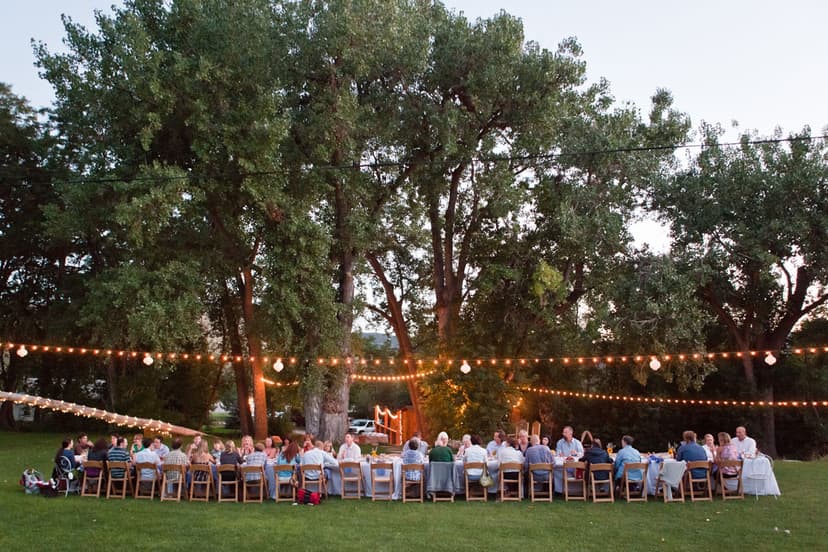Here are a few reasons why you’ll want to savor Colorado’s farm-to-table riches:
1. Fresh Flavors are Just Better
When your meal’s ingredients have come from a local farm, the produce ripens on the trees and in the fields, ensuring they taste as nature intended: Delicious! In Colorado, more than 36,000 farms blanket the state, including some of the nation’s most fertile soil on our eastern plains and the valley of the western mountains. In addition to the nutrient-rich land, the state’s unique climate plays a role in creating mouthwatering flavors. The cool nights and warm days develop the sweet flavors of several fruits — a Palisade peach or Rocky Ford melon so perfectly luscious that you know it couldn’t have come from anywhere else. A pie made with Paonia’s cherries is the perfect recipe for a sweet and tart summer treat, and an ear of Olathe sweet corn tinged with smokiness from the grill creates sensory memories at July barbecues. Pueblo chiles, which grow toward the sun instead of hanging down, pack more heat than jalapeños thanks to dry and sunny days, when the smell of them roasting lets us know fall is on the way. And because of our high altitude and drier air, fewer pesticides are needed to grow things successfully and sustainably.
2. It’s Easy to Do
With more and more restaurants finding ways to base their menus around seasonal ingredients, it’s hard to find a town (or a block, in some cases!) where you won’t encounter the tastiest goods from local producers. In fact, the esteemed MICHELIN Guide recognized four Colorado restaurants with Green Stars, making up 10 percent of the total Green Stars in the U.S. “These restaurants offer dining experiences that combine culinary excellence with outstanding eco-friendly commitments,” says MICHELIN. To achieve this rating, chefs work with natural growers and farmers, reduce waste and plastic from their supply chain, and contribute to charitable and educational projects that support these values.
However, when you’re shopping for food to cook yourself, look for the Colorado Proud logo, which signifies that the products are grown, raised and processed in the Centennial State. There are also more than 100 farmers’ markets in Colorado, and they’re some of the best places to find local bounty you can’t easily find in supermarkets, like tatsoi or heirloom eggplant. Plus, these markets sell a lot more than fruits and veggies — look for applesauce, honey, bread, dumplings, vinegar, cheese, hummus, grass-fed beef and lamb, and many other byproducts of these growers’ hard work. And as you drive through Colorado’s rural areas, keep an eye out for roadside farm stands — nothing’s fresher than what they’re selling.
3. Our Western Heritage is Preserved
Hundreds of farms and ranches in Colorado are classified as Centennial Farms — properties that have belonged to the same family for at least 100 years. These people have contributed to the state’s agricultural heritage and natural beauty for generations, and Coloradans want to ensure they’re here for another 100 years. This program is the first of its kind, a testament to the importance these farms hold in Colorado. Each year, the newly recognized farms are announced at the Colorado State Fair, which is another showcase and celebration of the state’s agricultural legacy. 4-H students demonstrate their commitment to carrying on farming and ranching excellence, and horse shows, livestock competitions and other exhibitions provide a glimpse of this agrarian life for two rewarding weeks each August.
4. You’re Living Sustainably
Most produce travels more than 1,500 miles before it gets to your table, losing freshness and nutrients on the way, while also increasing its carbon footprint. By opting to eat local while in Colorado, you will not only be cutting out the greenhouse gasses used to ship your food from across the country, but supporting the farms and ranches that, when profitable, are able to maintain open spaces and wildlife habitats that play a crucial role in sustaining fragile ecosystems.
Read More
Colorado’s Elevated Dining Scene
The Colorado Farm Experience













